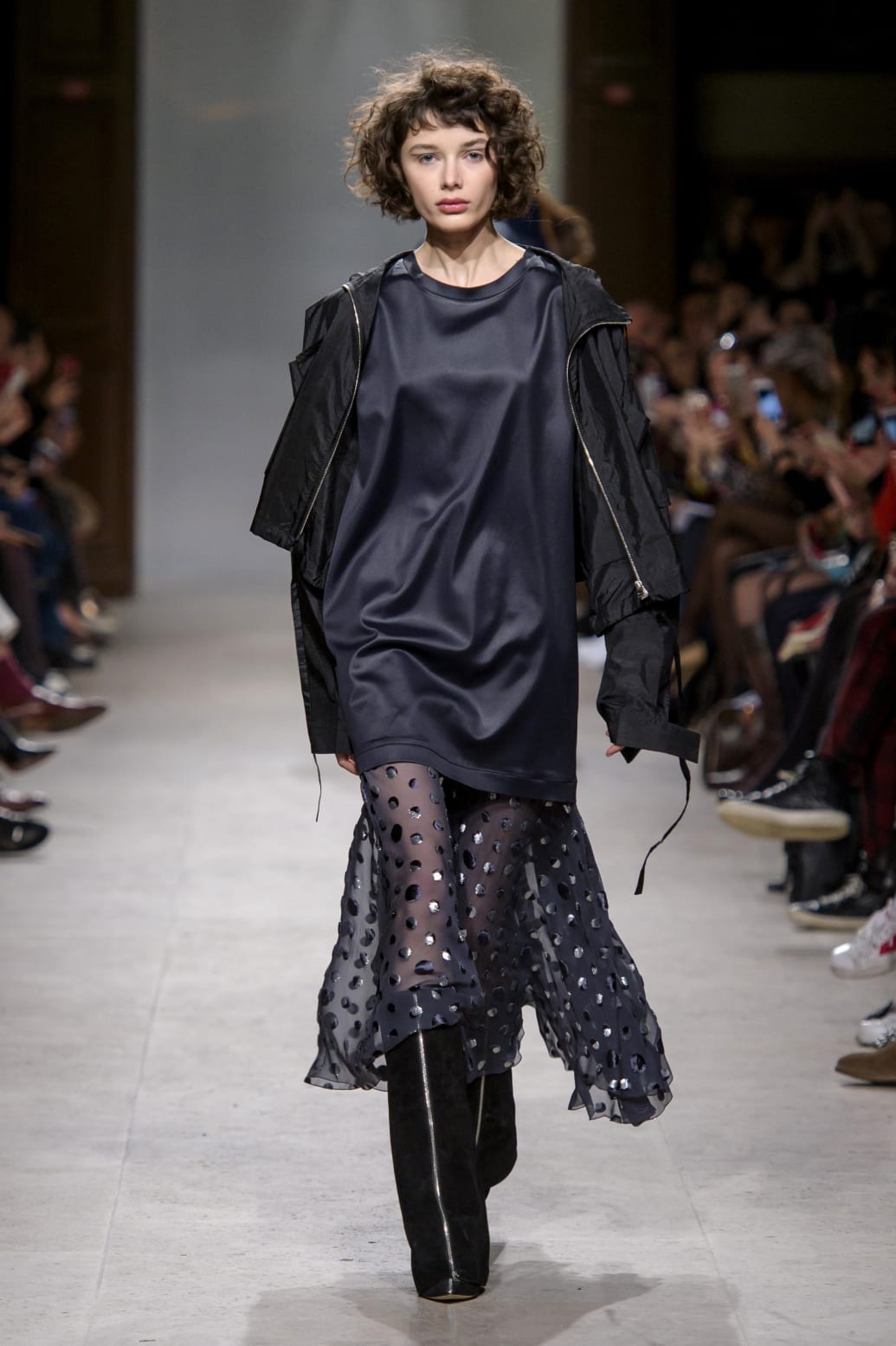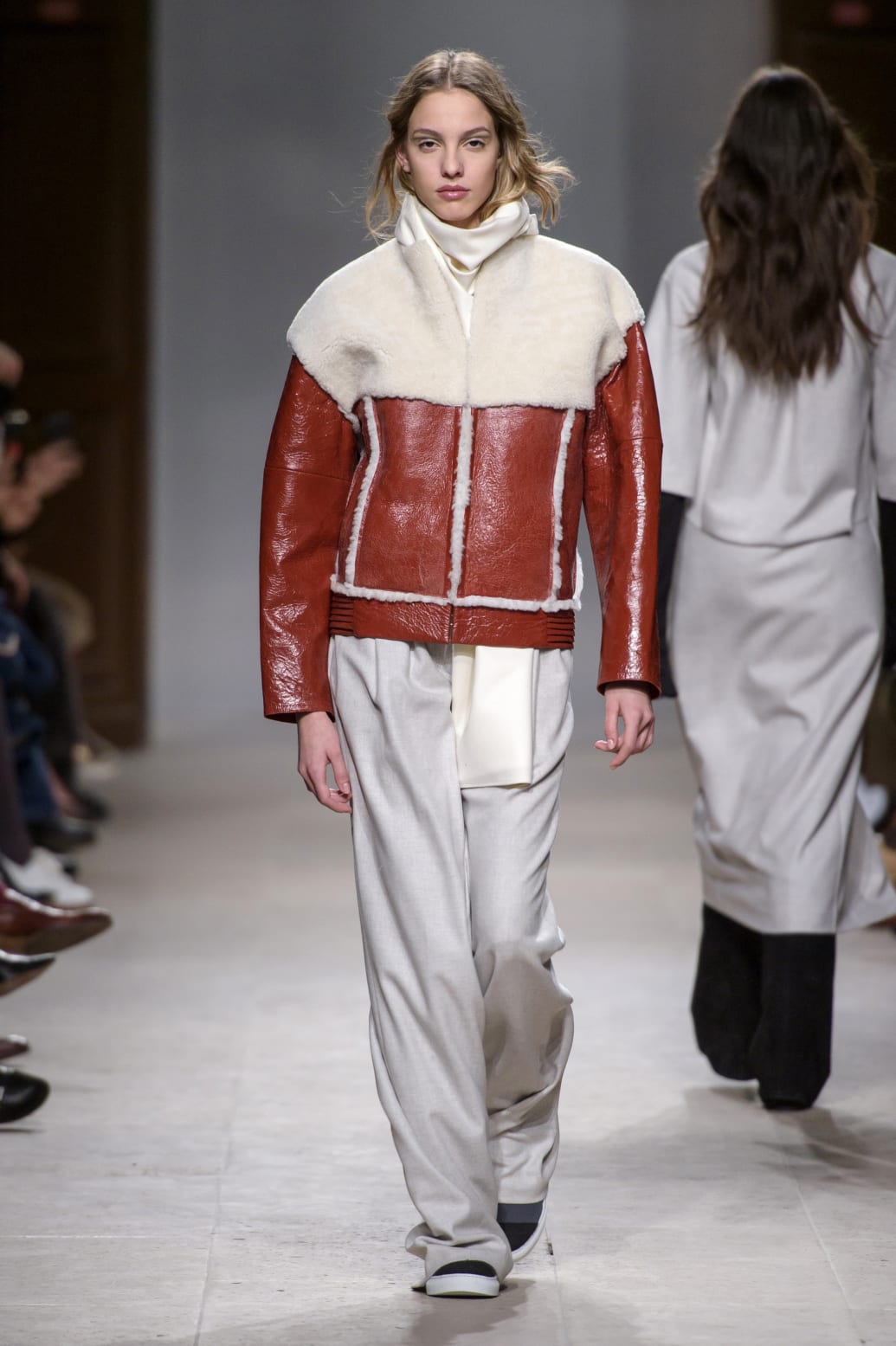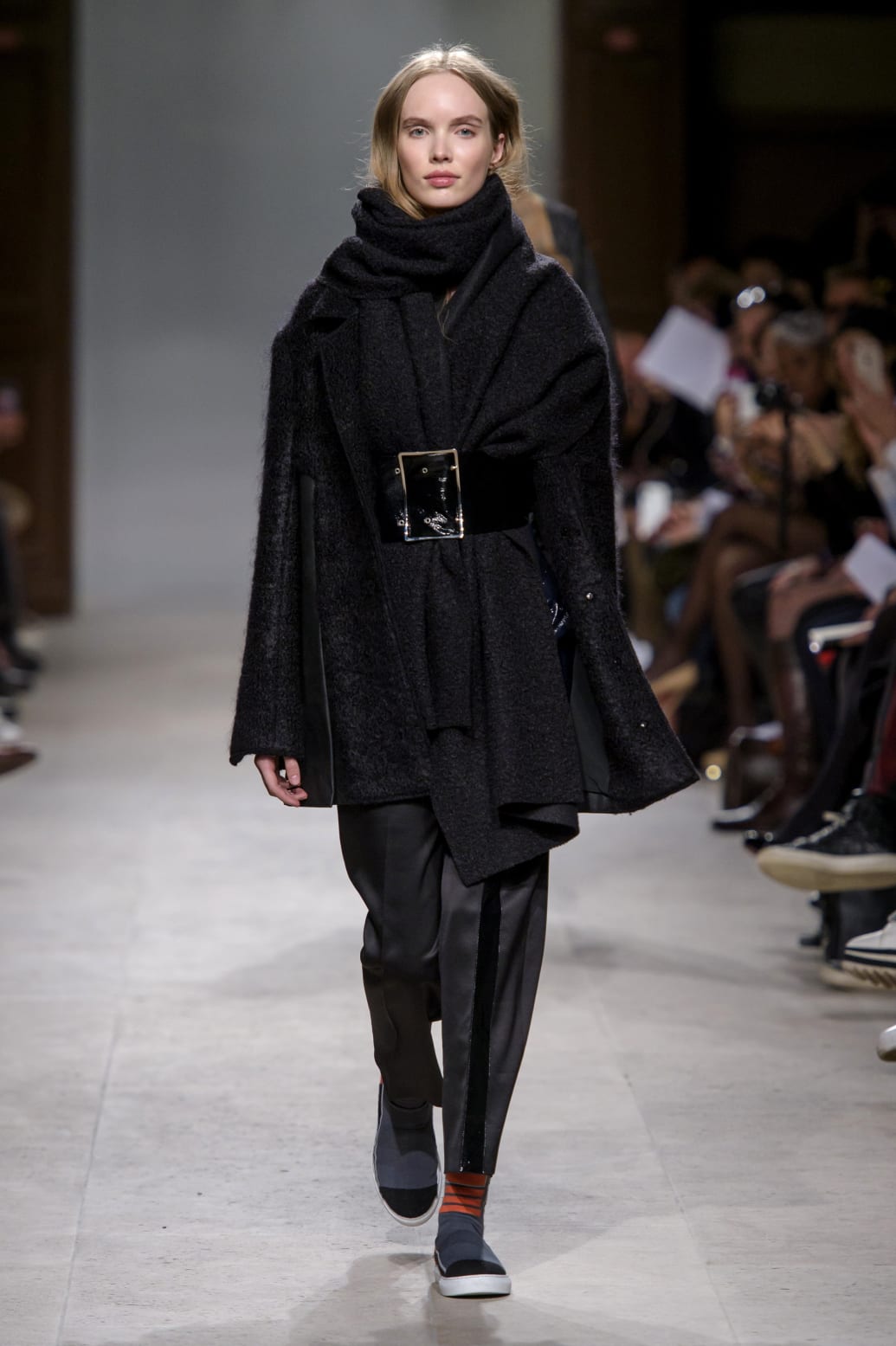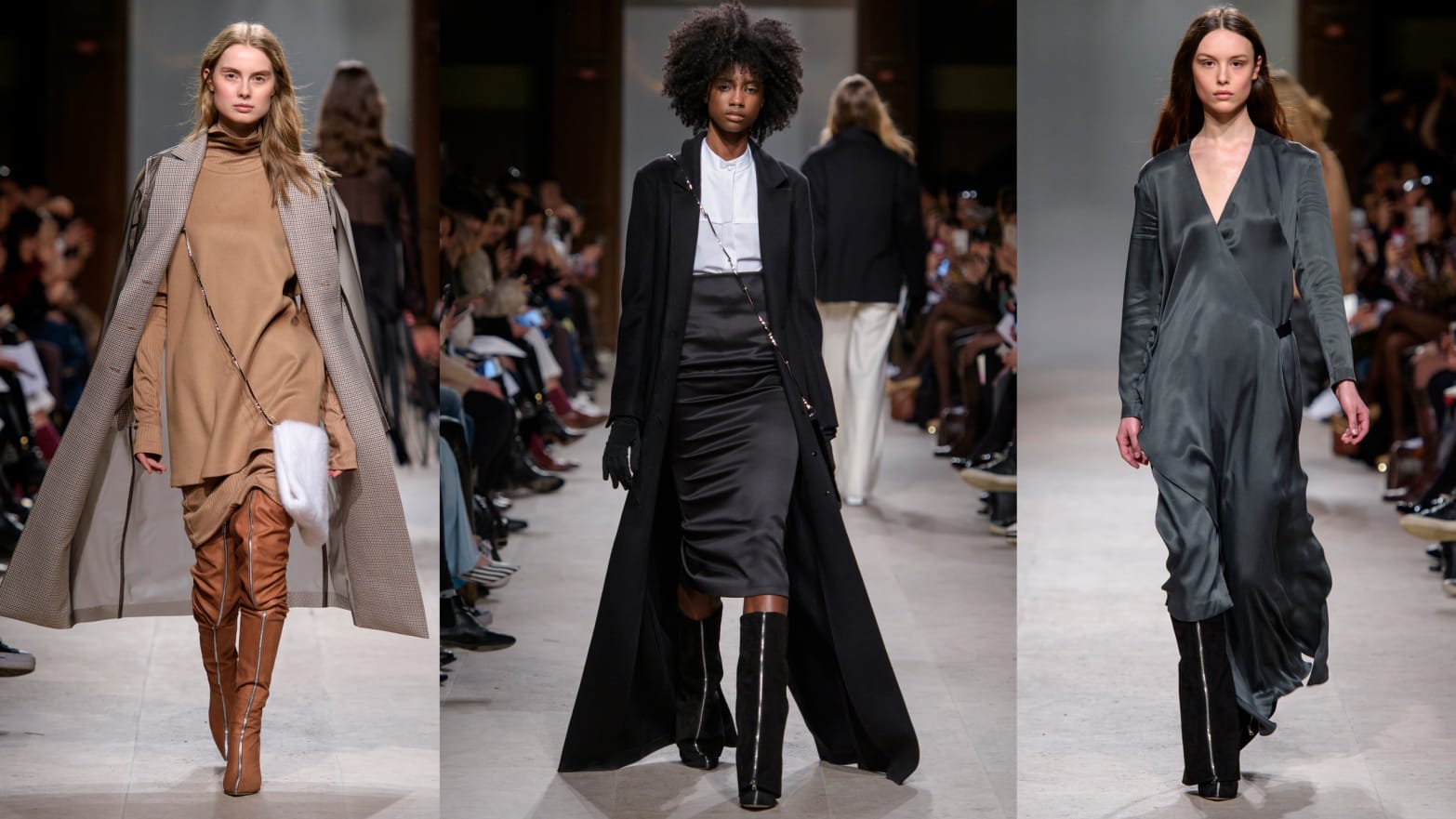Oxford Fashion Studio
If there’s a war to be waged on behalf of humanity, consider calling the design houses of Esha Sethi Thirani and Alleira Batik to dress our heroines for battle.
Part of the Oxford Fashion Studio group show, each designer presented structured and architectural details—a stiff bell sleeve here, a puffed shoulder there, a precisely draped cape—that exuded strength without sacrificing femininity.
In earth tone colors with an emphasis on black and gold Thirani looked to the past utilizing kalamkari, an ancient Indian technique of painting to design artisanal fabrics with jute cotton as a through line; Alleira Batik hewed close to its signature batik in separates and statement-making dresses.
Despite nodding to yesteryear both collections felt modern with the everyday women as a heroine and star of her own story. Batik underlined that message by opening the show with Madeline Stuart, widely considered to be the first professional model with Down syndrome.
Maison RAVN
“Our work is all about handmade detail,” said Claudia Ravnbø at her atelier, as she delicately revealed layers of Japanese fabric on the outside of a clutch.
With an average of three months to create the one-of-a-kind python or crocodile bags, the inspiration for Maison RAVN’s latest collection began when Ravnbø stumbled on and was drawn to photographs of Norway’s Queen Sonja.
While purses are difficult canvases to convey the opulence of a sovereign’s wardrobe, Ravnbø focuses on blue and gold color palettes to lift her vision, albeit somewhat abstract, with details like stripes on the front of a bag meant to emulate royal sashes.
However, the real star lies inside. Flip the lid and custom embroidered fabric ranging from all over the world—and multiple centuries—greets you.
“I went to dinner, I went to lunches and everybody had the same bag. And I was like, ‘This is not luxury,’” Ravnbø told The Daily Beast. “Every woman is so unique and different, and it should really reflect the personality.”
Kristina Fidelskaya
At the Musée de L’Armeé, a setting fit for pomp and circumstance, Kristina Fidelskaya opted instead for elevated minimalism and nailed it.
Pairing neutral tones together in a single look, much less almost an entire show, is dicey. At its best it can convey simplicity and elegance; at its worst, drabness. Fidelskaya manages to achieve the former through thoughtful color blocking and cinched waists in her signature dress coats, and breezy separates accentuating the body, while creating a feeling of effortless dress.
A mix of cashmere, silk, dry wool, and laminated cotton, Fidelskaya’s fabric choices highlight that neither comfort nor style have to be mutually exclusive. Here, they envelop the model and viewer conveying the subtle message that less is indeed still more.

Courtesy Filippo Fior

Courtesy Filippo Fior

